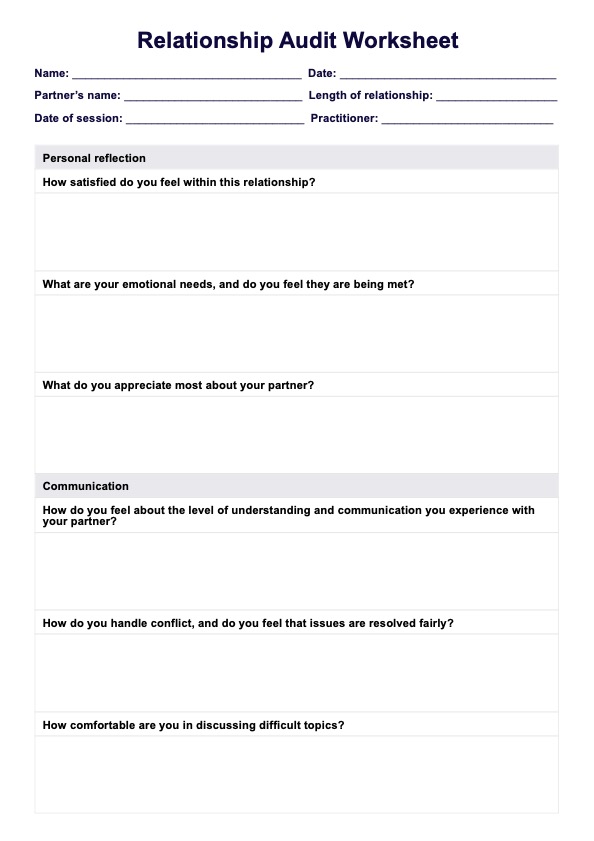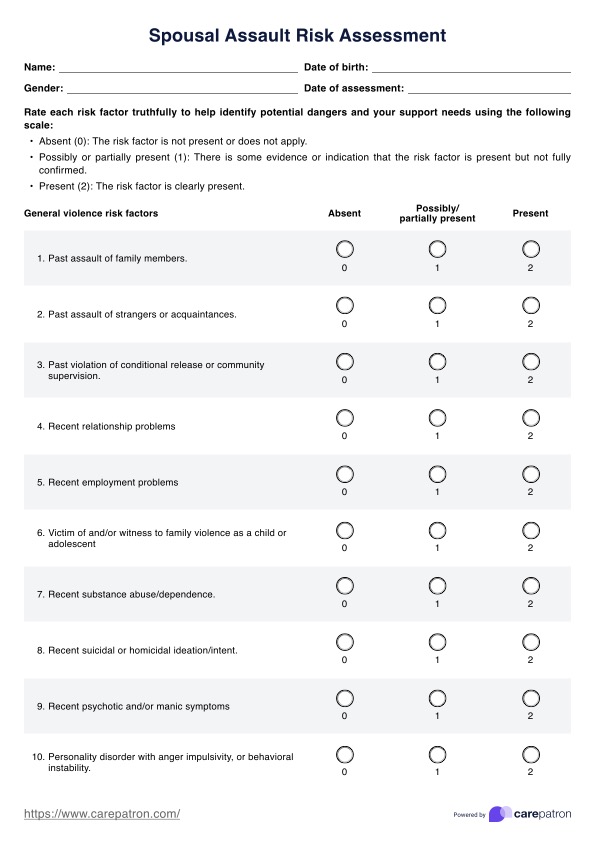Gottman Feelings Wheel
Assist your patients with identifying and understanding their emotions with the help of a Gottman Feelings Wheel. Click here for a free template copy!


Introduction to the Gottman Feelings Wheel
The Gottman's Feelings Wheel, developed by Dr. Gloria Willcox from the esteemed Gottman Institute, is a tool designed to facilitate the recognition and communication of emotions. Rooted in the belief that emotional awareness is a skill to be acquired, this wheel serves as a valuable aid in the journey towards personal understanding and expressing feelings effectively.
The wheel's structure has an inner circle featuring six basic emotions: mad, sad, scared, joyful, powerful, and peaceful. These fundamental emotions form the foundation of our complex emotional experiences. Surrounding this core are two outer concentric circles, intricately detailing secondary emotions that orbit and intertwine with the primary ones. This design provides a nuanced and comprehensive framework to delve into human emotions' multifaceted nature and complex range.
The wheel's purpose is to:
- Expand one's emotional vocabulary: This aids individuals in pinpointing the exact nuances of their emotional states
- Help with self-discovery and introspection: This helps provide insight into the underlying currents shaping one's experiences in order to find constructive and adaptive ways to engage with one's specific feelings.
- Teach the individual that recognizing different feelings is a learned skill: This helps with practice and reflection until one can hone their emotional intelligence.
Whether utilized in therapeutic settings or for personal growth, the Gottman feeling wheel is a valuable instrument for clearly understanding the intricacies of one's emotional life. It provides a structured approach to identifying and comprehending feelings, fostering a deeper connection with one's emotional self.
Gottman Feelings Wheel Template
Gottman Feelings Wheel Example
How to use the Gottman Feelings Wheel?
The Gottman Feelings Wheel is a straightforward template you and your client can use during your sessions. To ensure that you have a copy on hand and you're making the most of the resource, follow the steps below:
Step 1: Obtain a copy of the feelings wheel
Access and download a printable feelings wheel by either:
- Clicking the "Use template" or "Download Template" button
- Searching for "Gottman Feelings Wheel" Carepatron's template library
Step 2: Familiarize with the wheel's structure
Examine the feelings wheel (Gottman) to understand its composition. The inner circle features six primary feelings: mad, sad, scared, joyful, powerful, and peaceful. The outer concentric circles detail secondary feelings associated with the primary ones, providing a nuanced perspective on emotional states.
Step 3: Let the patient reflect on their current emotional state
Have the patient pause and reflect on their present emotional state. The inner circle of the emotion wheel can serve as a starting point for identifying their core emotions. Afterward, they may explore the outer circles of the wheel.
Step 4: Write down identified emotions
Give the patient a moment to journal or make notes about the specific emotions they have identified. Writing down feelings can further solidify their awareness and provide a record for future reflection.
Step 5: Practice, reflect, and connect
Ensure your patients have a copy of the Gottman Feelings Wheel whenever they practice emotional awareness and reflect on their emotional journey. Throughout this journey, they may share their emotional discoveries with you and their trusted friends and family. Doing this can offer new perspectives, strengthen relationships, and support navigating complex feelings.
Who should use the Gottman Feelings Wheel tool?
The Gottman Feelings Wheel is a versatile instrument that benefits a diverse range of individuals, irrespective of age or relationship status. Its applications span various domains, with particular significance in psychology, therapy, and personal development.
The inclusivity of the feelings wheel makes it a valuable resource for a broad spectrum of individuals and professionals:
- Therapists and counselors: Mental health professionals leverage the feelings wheel to enhance therapeutic interventions, facilitating deeper emotional exploration and communication.
- Couples: Whether in the early stages of a relationship or navigating the complexities of long-term commitment, couples benefit from using the feelings wheel to foster understanding and connection.
- Individuals in therapy: Those undergoing individual therapy can employ the feelings wheel to elucidate and articulate their emotions, contributing to a more profound self-awareness.
- Self-help enthusiasts: Individuals seeking personal growth and emotional well-being independently use the feelings wheel to expand their emotional vocabulary and enhance self-awareness.
The importance of understanding one's feelings
The importance of understanding and naming one's feelings cannot be overstated, as it plays a pivotal role in shaping the quality of one's relationships, regulating one's emotions, fostering personal empowerment, and unraveling the complexities of one's behavior.
If your client asks, provide them with the following breakdown of the reasons why it's important to understand and name one's own feelings:
Emotional awareness
Being emotionally aware equips one with a powerful and useful tool for navigating the intricate terrain of relationships. If one can clearly articulate one's feelings, it facilitates more effective communication, which can aid in building and nurturing meaningful connections.
Emotion regulation
Emotional regulation is understanding and naming one's feelings instead of suppressing or avoiding emotions. By unraveling the complex interplay of emotions, one gains insight into their origins and can develop strategies to manage them constructively, preventing the escalation of conflicts.
Empowerment
Naming one's feelings is an act of empowerment. It highlights the choices one can make in responding to one's feelings. Realizing that one can influence the course of one's emotional journey empowers one to make conscious decisions about how to engage with and channel one's emotions, which can lead to personal growth, resilience, and capacity to shape one's emotional well-being.
Understanding behavior
Emotions are powerful motivators that drive behavior. The ability to name and understand these emotions is critical to deciphering the underlying motivations influencing one's actions. By unraveling this emotional tapestry, one gains a deeper understanding of oneself, aligning one's actions with one's goals and navigating the complexities of life with greater clarity.
With the importance of understanding one's feelings, if your patient needs further assistance with emotional awareness, give them a copy of these resources:
Commonly asked questions
It's a type of activity wherein the referring physician and the client use the feeling wheel to narrow down the core emotion/s the patient is feeling.
The six core emotions are mad, sad, scared, joyful, powerful, and peaceful.
Our feelings wheel template can be used as a guide, tool, reference, or even document that one can use to track their progress.


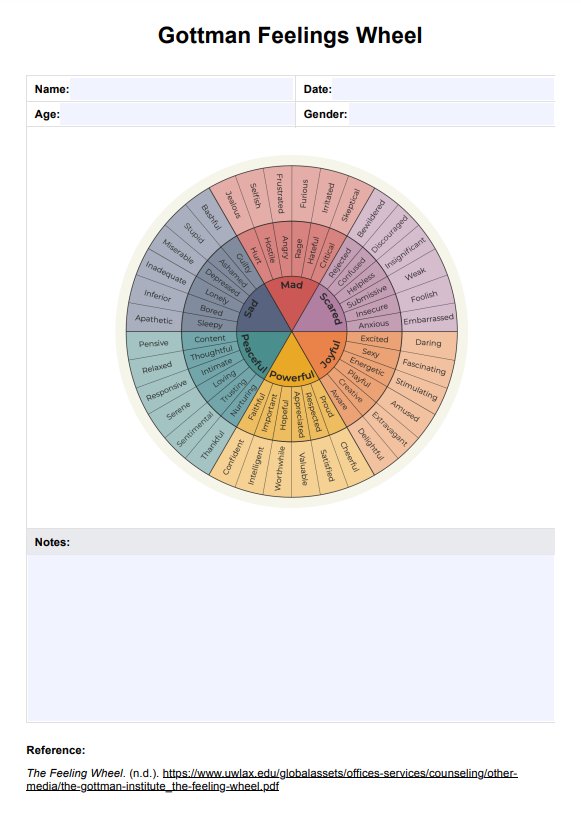



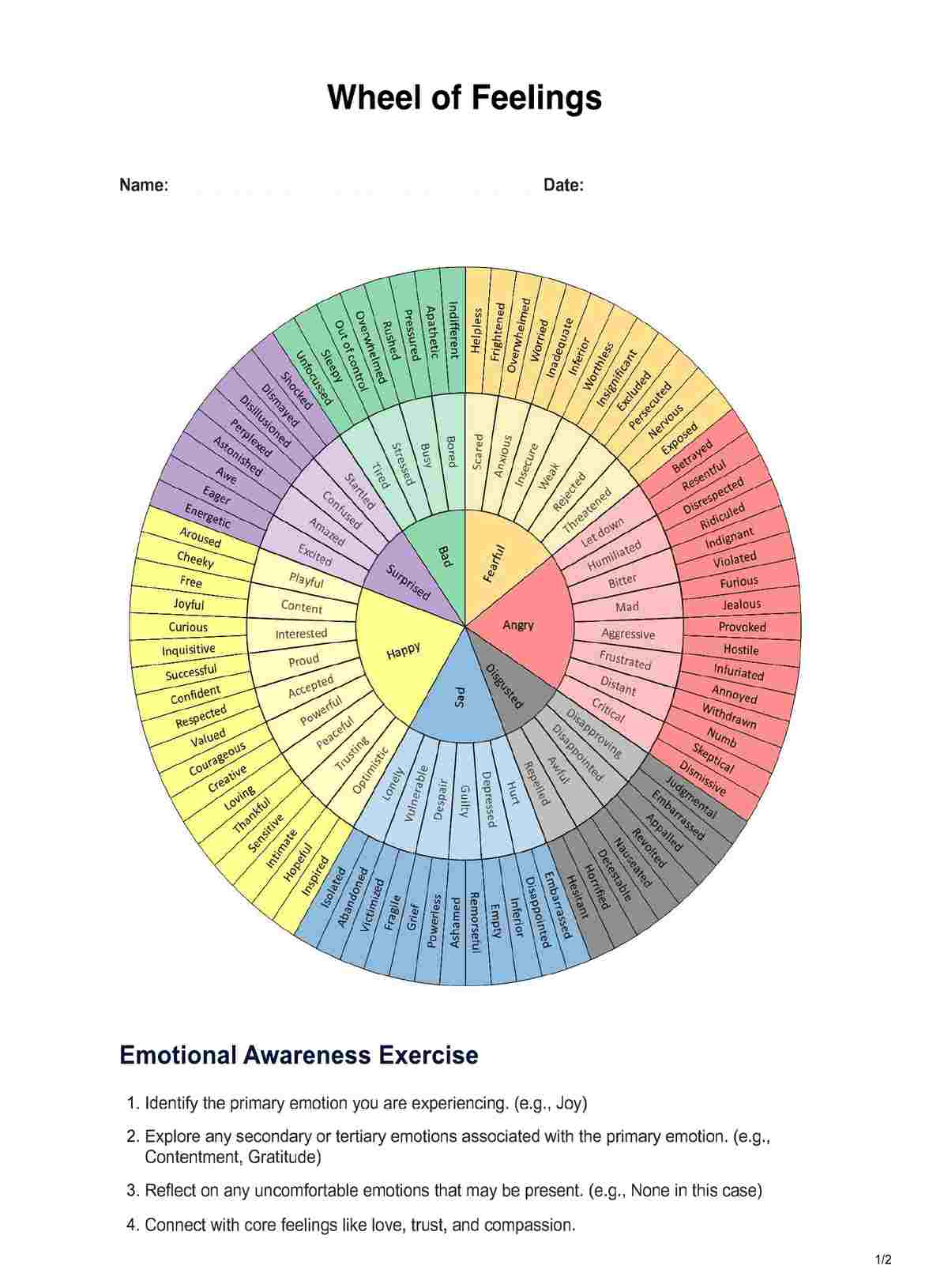

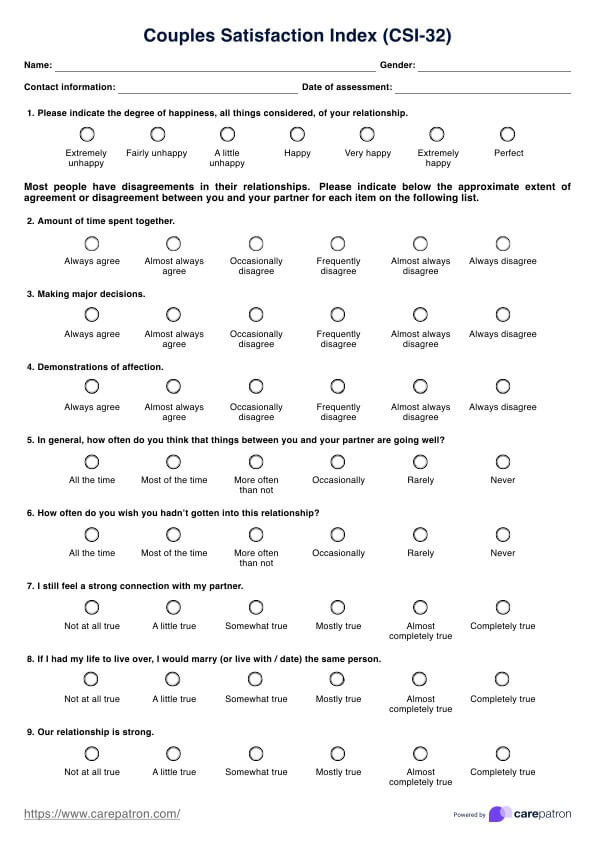











-template.jpg)


